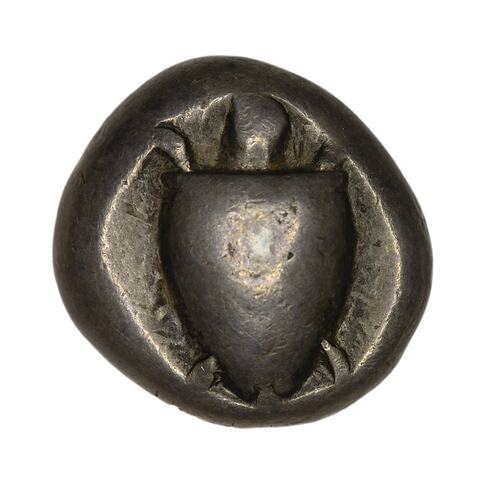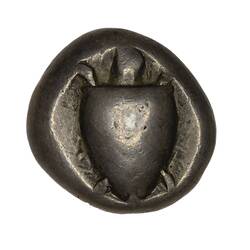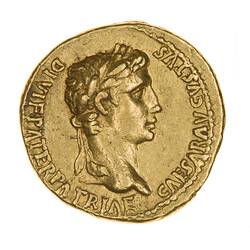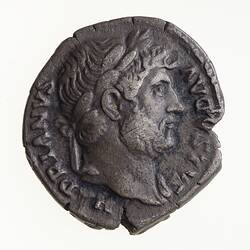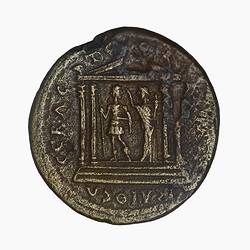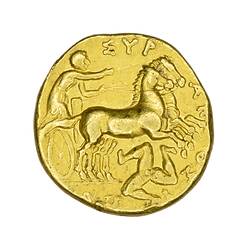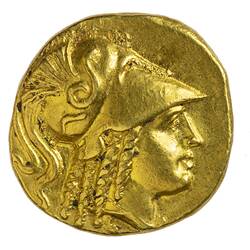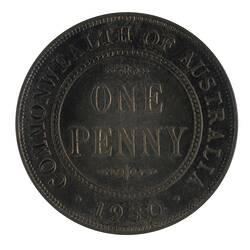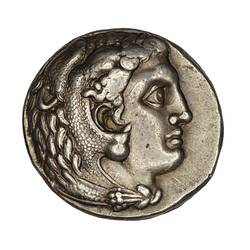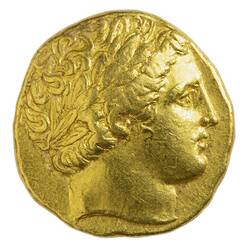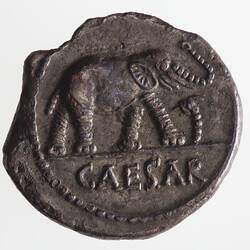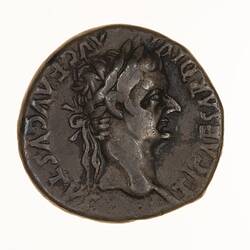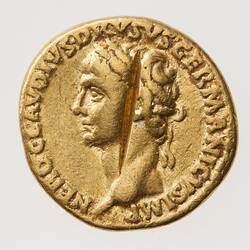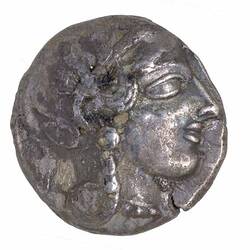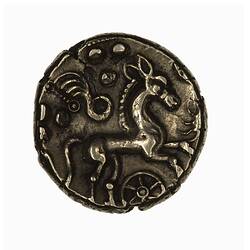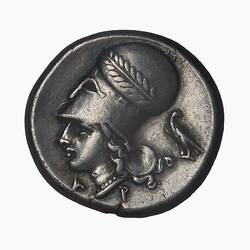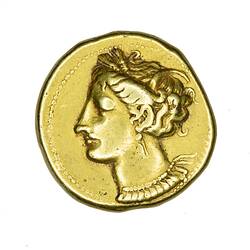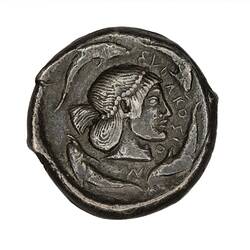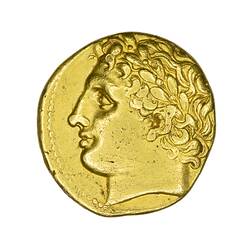The ancient Greek and Roman empires stretched far across the Mediterranean and beyond. Borrowing the idea of coins from Asia Minor, they used coins to promote their rulers, achievements, and the gods that protected them. The coins were minted by hand in workshops using precious metals such as gold, silver, bronze and electrum.
The First Coins
The Lydians from western Asia Minor (now modern Türkiye) were amongst the first people to issue coins as we know them today, using a rare natural alloy of gold and silver called electrum. They stamped their coins with the roaring head of a lion to show the power of their king (NU 15554).
The idea soon spread to the ancient Greek island state of Aegina which minted the first coins that were used in international trade. They minted coins with the image of a sea turtle because they had a powerful navy (NU 2487). After the Athenians destroyed the Aeginetan ships during the Peloponnesian War (431-404 BCE), their currency changed and thereafter the island of Aegina only minted coins depicting a land tortoise.
Famous Faces
While the main use of coins was in transactions for goods or services, coins were also used by ancient rulers to promote themselves or their achievements. This was especially important as the currency travelled across their empire. Ancient kings and emperors could promote an idealised portrait of themselves, or even portray themselves dressed as a god, such as Herakles (NU 18322). In this way the kings could infer that their own rule was like that of a god, and that they too had omnipotent power.
Museums Victoria's numismatic collection covers well known rulers such as the ancient Macedonian kings Alexander the Great (NU 18322) and his father Philip II (NU 2345); the Roman statesman Julius Caesar (NU 2180) and his partner Queen Cleopatra of ancient Egypt (NU 2197); the Emperor Augustus (NU 22518) who greatly expanded the Roman Empire across the Mediterranean; and Augustus' successors: the Emperors Tiberius (NU 22529), Claudius (NU 23889), Trajan (NU 16389) and Hadrian (NU 22769).
Ancient Cities
The tetradrachm coin of the Greek city state of Athens was minted for over four hundred years. During this time the Athenians depicted the portrait of the goddess Athena on one side of the coin and an owl on the other (NU 2460). These coins were so famous that they were known as glaux ('little owl') throughout the region.
Other cities also used images that reflected their identity, such as a Corinthian-style helmet for the city of Corinth (NU 15523) and a temple for the city of Pergamon (NU 2589).
Other well-known places represented in the collection are ancient Britain, now modern England, Scotland and Wales (NU 16), Carthage, in modern Tunisia (NU 16035), and Thebes, in modern Greece (NU 2134).
Amazing Animals
Iconography in coins was used to highlight attributes which the ruler or states wanted to promote. These included virtues such as strength, symbolised by a horse, stag (NU 2670) or bull; the king's military prowess, depicted through a chariot (NU 2319); and the boasting of local resources and wildlife, such as dolphins (NU 2318).
References
Art Institute of Chicago, 2024, Stater (Coin) Depicting a Sea Turtle, https://www.artic.edu/artworks/142732/stater-coin-depicting-a-sea-turtle, accessed 5 Sep 2024
Holt, FL, 2021, World History Encyclopedia: The Invention of the First Coinage in Ancient Lydia, https://www.worldhistory.org/article/1793/the-invention-of-the-first-coinage-in-ancient-lydi/, accessed 5 Sep 2024
Tauler and Fau, 2019, Coinweek: Coin Profile - The Owl of Athena (circa 449-413 BCE) Silver Tetradrachm, https://coinweek.com/coin-profile-the-owl-of-athena-circa-449-413-bc-silver-tetradrachm/, accessed 5 Sep 2024
More Information
-
Keywords
-
Authors
-
Article types
